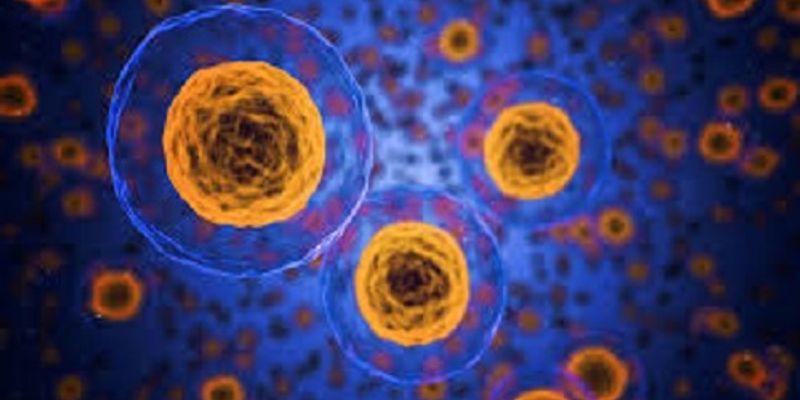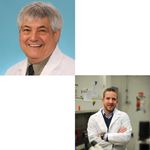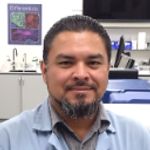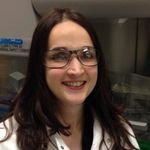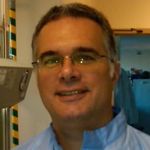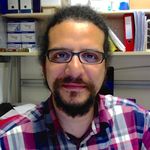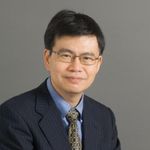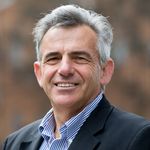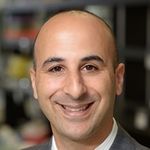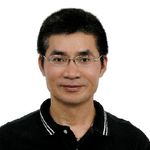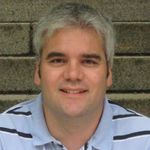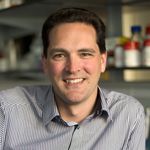Cell Differentiation
Cell differentiation: is a process in all growing organisms, and begins once the female egg is fertilized. Cell differentiation is a procedure by which a less specialized cell becomes a more specialized cell type.
-
OCT 06, 2016 | 7:30 AMIntra-tumor heterogeneity is a major obstacle to cancer treatment. Existing single-cell studies of intra-tumor heterogeneity have largely focused on DNA mutations; functional heterogeneity is...Speaker: Shyam Prabhakar, PhDOCT 04, 2016 | 8:00 AMDATE: October 4, 2016 TIME: 8:00am PT, 11:00am ET Extracting robust expression data from clinical samples represents a unique opportunity to find actionable biomarkers. But it...SEP 21, 2016 | 7:30 AMThe most important job of automated biology is to produce results that moves your research forward. If automation only executes a program of pre-determined set of steps, the researcher is lef...Speaker: Tim Sherrill , Mike Kowalski, Ph.D.Presented at: Beckman Coulter Life Sciences Virtual Trade Show
Sponsored By: Beckman Coulter Life Sciences, Beckman Coulter Life SciencesAUG 30, 2016 | 8:00 AMBuerger’s disease, commonly known as Thromboangiitis obliterans, is a non-atherosclerotic, segmental inflammatory disease that can affect the small and medium-sized arteries of young pe...AUG 30, 2016 | 8:00 AMMy research program focuses on building the technology to generate diverse human cell-types for application in regenerative medicine and drug toxicology testing. While embryonic stem cells (E...AUG 30, 2016 | 8:00 AMThe reprogramming of somatic cells into induced Pluripotent Stem Cells (iPSC) has great potential of applications, not only in basic research, but also in drug screening and cell therapy. Wit...Speaker: Rene Quintanilla Jr.Presented at: 4th Annual 24 Hours of Stem Cells™ virtual event
Sponsored By: Thermo Fisher Scientific, Thermo Fisher ScientificAUG 30, 2016 | 8:00 AMAccess this training to learn more about the evolution of pluripotent stem cell culture systems and which solution is best for your PSC culture goals....Speaker: Rhonda Newman, PhDPresented at: 4th Annual 24 Hours of Stem Cells™ virtual event
Sponsored By: Thermo Fisher Scientific, Thermo Fisher ScientificAUG 30, 2016 | 8:00 AMRecent discoveries in stem cell biology have increased the importance of stem cells in therapeutics and have improved researchers’ understanding of normal and disease processes. The inh...Speaker: Jolene Bradford, MLS, SCYM(ASCP)CMPresented at: 4th Annual 24 Hours of Stem Cells™ virtual event
Sponsored By: Thermo Fisher Scientific, Thermo Fisher ScientificAUG 30, 2016 | 8:00 AMNeurons derived from human pluripotent stem cells (hPSCs), including embryonic stem cells (ESCs) and induced pluripotent stem cells (iPSCs), are excellent resources for disease modeling and d...Speaker: David Kuninger, PhDPresented at: 4th Annual 24 Hours of Stem Cells™ virtual event
Sponsored By: Thermo Fisher Scientific, Thermo Fisher ScientificAUG 30, 2016 | 8:00 AMThe human enteric nervous system (ENS) is derived from the neural crest and represents a complex network of ~500 million neurons with dozens of distinct neurotransmitter and hormone subtypes ...AUG 30, 2016 | 8:00 AMIn the last 10 years, PCSK9 emerged as a promising target for the treatment of autosomal dominant hypercholesterolemia (ADH). With the emergence of induced pluripotent stem (hiPS) cells and f...AUG 30, 2016 | 8:00 AMMost discussions about pluripotent stem cells center around their promise for regenerative medicine. The most remarkable quality of these cells is their ability to turn into all of the ...AUG 30, 2016 | 8:00 AMMesenchymal stromal cell (MSC) therapy is a promising option to support endogenous regeneration and immunomodulation. However, the clinical results are contradictory. We think that the recent...AUG 30, 2016 | 8:00 AMIn our previous preclinical studies, when neural stem progenitor cells (NS/PCs)-derived from hiPSCs were transplanted into mouse or non-human primate spinal cord injury (SCI) models, long-ter...AUG 30, 2016 | 8:00 AMThe central nervous system (CNS) is a conglomerate of diverse, interconnected tissues that each contain cell phenotypes specific to their distinct anatomical region. Recent studies have demon...AUG 30, 2016 | 8:00 AMUsing human pluripotent stem cells as a screening platform, we have identified a novel cell surface maker that identifies foregut endoderm progenitors in pancreas and liver. We have sho...AUG 30, 2016 | 8:00 AMHuman induced pluripotent stem cells (iPSCs) are valuable cells for retinal disease modeling, as these cells are of patient origin and can be differentiated into cell types of interest. This ...AUG 30, 2016 | 8:00 AMNeuropathic pain and bladder dysfunction represent significant quality of life issues for many spinal cord injury patients. Loss of GABAergic tone in the injured spinal cord may contribute to...AUG 30, 2016 | 8:00 AMOne of the ultimate goals in Regenerative Medicine is the generation of pluripotent stem cells (PSCs) directly from somatic cells obtained from patients. Although major findings in the defini...AUG 30, 2016 | 8:00 AMThe human umbilical cord is a promising abundant source of mesenchymal stem cells (MSCs). Compare to other MSCs, the advantages of human umbilical cord MSCs (hUC-MSCs) are easily accessible a...AUG 30, 2016 | 8:00 AMThe study of human genetic neurodevelopmental disorders (NDDs) is complicated by the inaccessibility of the relevant tissue for study: it is extremely rare to obtain post-surgical brain sampl...AUG 30, 2016 | 8:00 AMThe isolation of human embryonic stem cells (hESCs) and the discovery of human induced pluripotent stem cell (hiPSC) reprogramming have sparked a renaissance in stem cell biology, in vitro di...AUG 30, 2016 | 8:00 AMYears of significant effort can go into generating key proof of concept data to support moving bench research to clinical development.Yet, much work remains in order to transition from POC to...AUG 30, 2016 | 8:00 AMOver the last 15 years, human pluripotent stem cell (hPSC) technologies have progressed from academic curiosities into tools with the promise to underpin commerce, leading to real progress in...
OCT 06, 2016 | 7:30 AM
Intra-tumor heterogeneity is a major obstacle to cancer treatment. Existing single-cell studies of intra-tumor heterogeneity have largely focused on DNA mutations; functional heterogeneity is...
Speaker:
Shyam Prabhakar, PhD
OCT 04, 2016 | 8:00 AM
DATE: October 4, 2016
TIME: 8:00am PT, 11:00am ET
Extracting robust expression data from clinical samples represents a unique opportunity to find actionable biomarkers. But it...
SEP 21, 2016 | 7:30 AM
The most important job of automated biology is to produce results that moves your research forward. If automation only executes a program of pre-determined set of steps, the researcher is lef...
Speaker:
Tim Sherrill
, Mike Kowalski, Ph.D.
Presented at: Beckman Coulter Life Sciences Virtual Trade Show
Sponsored By: Beckman Coulter Life Sciences, Beckman Coulter Life Sciences
Sponsored By: Beckman Coulter Life Sciences, Beckman Coulter Life Sciences
AUG 30, 2016 | 8:00 AM
Buerger’s disease, commonly known as Thromboangiitis obliterans, is a non-atherosclerotic, segmental inflammatory disease that can affect the small and medium-sized arteries of young pe...
AUG 30, 2016 | 8:00 AM
My research program focuses on building the technology to generate diverse human cell-types for application in regenerative medicine and drug toxicology testing. While embryonic stem cells (E...
AUG 30, 2016 | 8:00 AM
The reprogramming of somatic cells into induced Pluripotent Stem Cells (iPSC) has great potential of applications, not only in basic research, but also in drug screening and cell therapy. Wit...
Speaker:
Rene Quintanilla Jr.
Presented at: 4th Annual 24 Hours of Stem Cells™ virtual event
Sponsored By: Thermo Fisher Scientific, Thermo Fisher Scientific
Sponsored By: Thermo Fisher Scientific, Thermo Fisher Scientific
AUG 30, 2016 | 8:00 AM
Access this training to learn more about the evolution of pluripotent stem cell culture systems and which solution is best for your PSC culture goals....
Speaker:
Rhonda Newman, PhD
Presented at: 4th Annual 24 Hours of Stem Cells™ virtual event
Sponsored By: Thermo Fisher Scientific, Thermo Fisher Scientific
Sponsored By: Thermo Fisher Scientific, Thermo Fisher Scientific
AUG 30, 2016 | 8:00 AM
Recent discoveries in stem cell biology have increased the importance of stem cells in therapeutics and have improved researchers’ understanding of normal and disease processes. The inh...
Speaker:
Jolene Bradford, MLS, SCYM(ASCP)CM
Presented at: 4th Annual 24 Hours of Stem Cells™ virtual event
Sponsored By: Thermo Fisher Scientific, Thermo Fisher Scientific
Sponsored By: Thermo Fisher Scientific, Thermo Fisher Scientific
AUG 30, 2016 | 8:00 AM
Neurons derived from human pluripotent stem cells (hPSCs), including embryonic stem cells (ESCs) and induced pluripotent stem cells (iPSCs), are excellent resources for disease modeling and d...
Speaker:
David Kuninger, PhD
Presented at: 4th Annual 24 Hours of Stem Cells™ virtual event
Sponsored By: Thermo Fisher Scientific, Thermo Fisher Scientific
Sponsored By: Thermo Fisher Scientific, Thermo Fisher Scientific
AUG 30, 2016 | 8:00 AM
The human enteric nervous system (ENS) is derived from the neural crest and represents a complex network of ~500 million neurons with dozens of distinct neurotransmitter and hormone subtypes ...
AUG 30, 2016 | 8:00 AM
In the last 10 years, PCSK9 emerged as a promising target for the treatment of autosomal dominant hypercholesterolemia (ADH). With the emergence of induced pluripotent stem (hiPS) cells and f...
AUG 30, 2016 | 8:00 AM
Most discussions about pluripotent stem cells center around their promise for regenerative medicine. The most remarkable quality of these cells is their ability to turn into all of the ...
AUG 30, 2016 | 8:00 AM
Mesenchymal stromal cell (MSC) therapy is a promising option to support endogenous regeneration and immunomodulation. However, the clinical results are contradictory. We think that the recent...
AUG 30, 2016 | 8:00 AM
In our previous preclinical studies, when neural stem progenitor cells (NS/PCs)-derived from hiPSCs were transplanted into mouse or non-human primate spinal cord injury (SCI) models, long-ter...
AUG 30, 2016 | 8:00 AM
The central nervous system (CNS) is a conglomerate of diverse, interconnected tissues that each contain cell phenotypes specific to their distinct anatomical region. Recent studies have demon...
AUG 30, 2016 | 8:00 AM
Using human pluripotent stem cells as a screening platform, we have identified a novel cell surface maker that identifies foregut endoderm progenitors in pancreas and liver. We have sho...
AUG 30, 2016 | 8:00 AM
Human induced pluripotent stem cells (iPSCs) are valuable cells for retinal disease modeling, as these cells are of patient origin and can be differentiated into cell types of interest. This ...
AUG 30, 2016 | 8:00 AM
Neuropathic pain and bladder dysfunction represent significant quality of life issues for many spinal cord injury patients. Loss of GABAergic tone in the injured spinal cord may contribute to...
AUG 30, 2016 | 8:00 AM
One of the ultimate goals in Regenerative Medicine is the generation of pluripotent stem cells (PSCs) directly from somatic cells obtained from patients. Although major findings in the defini...
AUG 30, 2016 | 8:00 AM
The human umbilical cord is a promising abundant source of mesenchymal stem cells (MSCs). Compare to other MSCs, the advantages of human umbilical cord MSCs (hUC-MSCs) are easily accessible a...
AUG 30, 2016 | 8:00 AM
The study of human genetic neurodevelopmental disorders (NDDs) is complicated by the inaccessibility of the relevant tissue for study: it is extremely rare to obtain post-surgical brain sampl...
AUG 30, 2016 | 8:00 AM
The isolation of human embryonic stem cells (hESCs) and the discovery of human induced pluripotent stem cell (hiPSC) reprogramming have sparked a renaissance in stem cell biology, in vitro di...
AUG 30, 2016 | 8:00 AM
Years of significant effort can go into generating key proof of concept data to support moving bench research to clinical development.Yet, much work remains in order to transition from POC to...
AUG 30, 2016 | 8:00 AM
Over the last 15 years, human pluripotent stem cell (hPSC) technologies have progressed from academic curiosities into tools with the promise to underpin commerce, leading to real progress in...
